Lowell, Massachusetts, offers a captivating journey through time, tracing its evolution from a rural settlement to a thriving industrial city.
Situated along the Merrimack River, Lowell’s history is deeply intertwined with the rise of the textile industry in the 19th century.
Originally founded as a planned manufacturing centre in the early 19th century, Lowell quickly became known as the “City of Spindles” due to its numerous textile mills and factories.
The city’s strategic location, abundant waterways, and innovative manufacturing techniques propelled it to prominence as a leading textile producer in the United States.
Moreover, Lowell’s industrial success attracted diverse immigrants, including Irish, French-Canadian, Greek, and Eastern European communities, who shaped its cultural landscape.
As we embark on a journey through Lowell’s history, we uncover tales of innovation, labour activism, and cultural heritage that continue to resonate today.
Early Foundations of Lowell, Massachusetts
The early foundations of Lowell, Massachusetts, lay in its establishment as a planned manufacturing centre in the early 19th century. Here are several key points elaborating on this period:
Incorporation and Industrial Vision
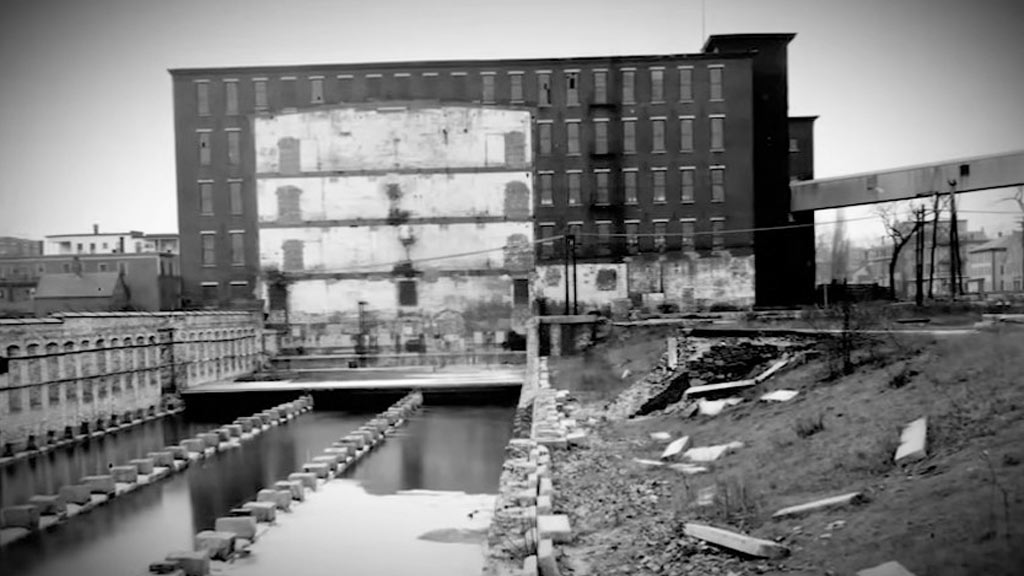
Incorporated in 1826, Lowell was envisioned as a model industrial city designed to harness the power of waterways for textile production.
Its strategic location along the Merrimack River provided abundant waterpower, essential for operating the mills and factories.
Francis Cabot Lowell’s Influence
The city was named after Francis Cabot Lowell, a pivotal figure in the American Industrial Revolution.
Lowell and his associates revolutionized textile manufacturing by introducing power looms and other mechanized processes, laying the groundwork for the city’s industrial success.
Planned Development
Lowell’s layout was meticulously planned, with a grid-like street pattern, spacious mill complexes, and designated residential, commercial, and recreational areas.
The city’s design aimed to maximize efficiency and productivity while providing a structured environment for workers and residents.
Textile Manufacturing Hub
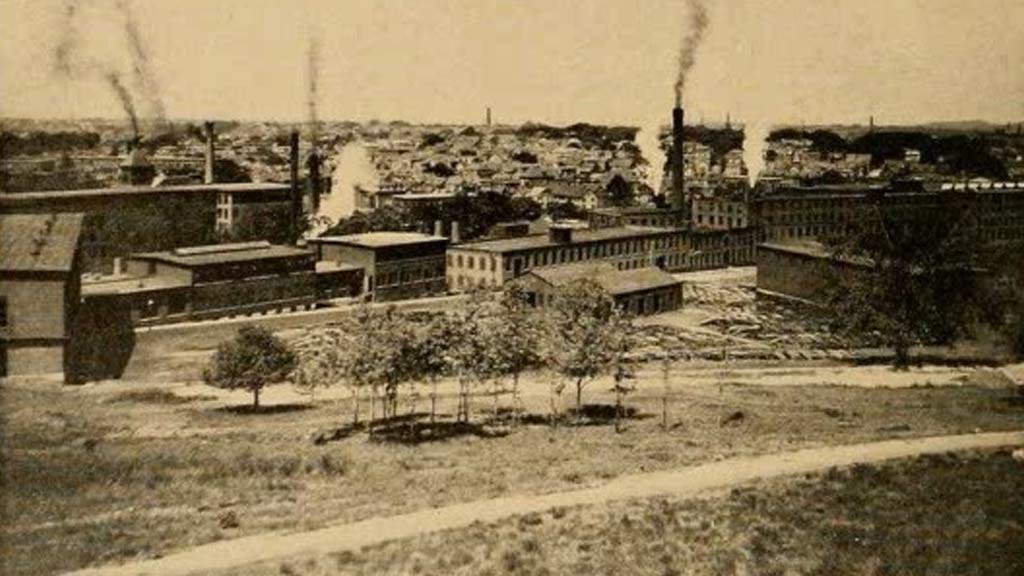
Lowell quickly gained recognition as the cradle of the American Industrial Revolution due to its concentration of textile mills and factories.
The city’s mills pioneered mass production techniques, making it a leading textile producer in the United States during the 19th century.
Immigrant Labor
Lowell attracted a diverse workforce, including immigrants from Ireland, Quebec, Greece, and Eastern Europe, to meet the growing demand for labour in the textile industry.
These immigrant communities brought their cultural traditions and skills, contributing to the city’s cultural diversity and industrial growth.
Social and Cultural Impact
The establishment of Lowell as an industrial hub had far-reaching social and cultural implications.
It transformed the rural landscape into a bustling urban centre, fueled economic growth and innovation, and shaped the fabric of American society during the Industrial Revolution.
The early foundations of Lowell, Massachusetts, epitomize the spirit of industrialization and innovation that defined the American Industrial Revolution.
The city’s legacy as a textile manufacturing powerhouse continues to be celebrated today, highlighting its significance in shaping the economic, social, and cultural landscape of the United States.
Incorporation in Lowell, Massachusetts History
The incorporation of Lowell, Massachusetts, marks a pivotal moment in the city’s history, setting the stage for its transformation into a bustling industrial centre.
Here’s an elaboration on the incorporation of Lowell:
Formation and Vision
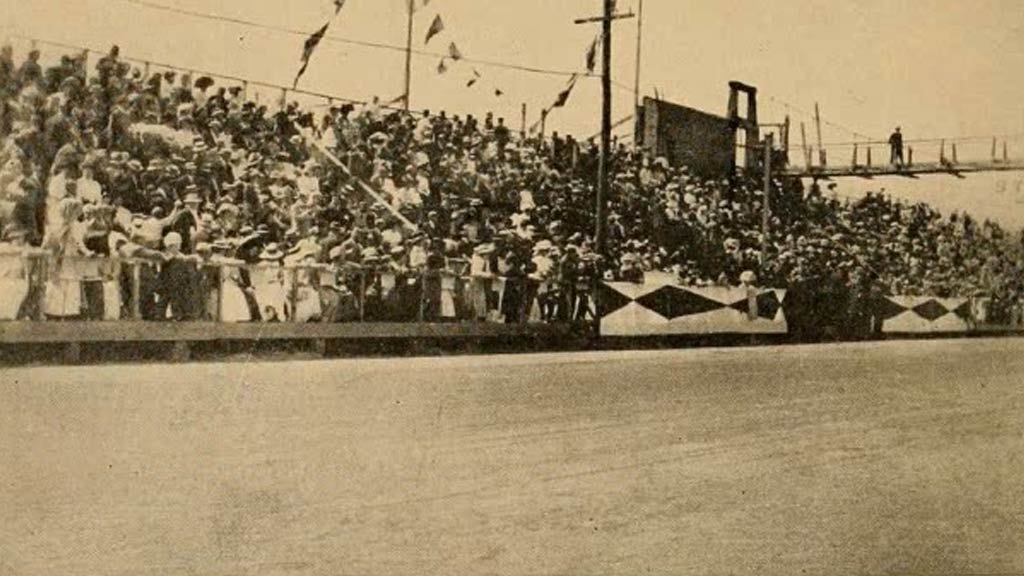
Lowell was officially incorporated as a town on March 1, 1826. The incorporation followed the visionary plans of Francis Cabot Lowell and his associates to establish a planned manufacturing center along the Merrimack River.
Industrial Ambitions
Lowell’s incorporation was driven by ambitions to harness the power of waterways for textile manufacturing. The city’s founders envisioned a model industrial community to revolutionize textile production in the United States.
Strategic Location
Lowell’s location along the Merrimack River provided abundant waterpower essential for operating textile mills and factories.
The city’s proximity to raw materials, transportation routes, and markets further enhanced its appeal as an industrial hub.
Planned Development

The incorporation of Lowell facilitated planned development with a carefully designed layout that included spacious mill complexes, grid-like street patterns, and designated residential, commercial, and recreational areas.
This planned approach aimed to maximize efficiency and productivity in the burgeoning textile industry.
Economic Growth
The incorporation of Lowell spurred rapid economic growth and urbanization, attracting investment, entrepreneurs, and a skilled workforce to the city.
The establishment of textile mills and factories fueled job creation and stimulated commerce, propelling Lowell to prominence as a leading industrial center in the 19th century.
Cultural Diversity
The incorporation of Lowell also attracted immigrants from various backgrounds, including Ireland, Quebec, Greece, and Eastern Europe, who sought employment opportunities in the textile industry.
These immigrant communities contributed to the city’s cultural diversity and enriched its social fabric.
The incorporation of Lowell, Massachusetts, symbolizes the birth of a new era in industrialization and innovation, laying the foundation for the city’s growth and prosperity as a key player in the American Industrial Revolution.
Lowell’s Unique Model In American Revolution
Lowell’s unique model in the American Industrial Revolution revolutionized the textile manufacturing industry, setting new standards for efficiency, productivity, and urban development.
Here’s an elaboration on Lowell’s model:
Integrated Manufacturing System
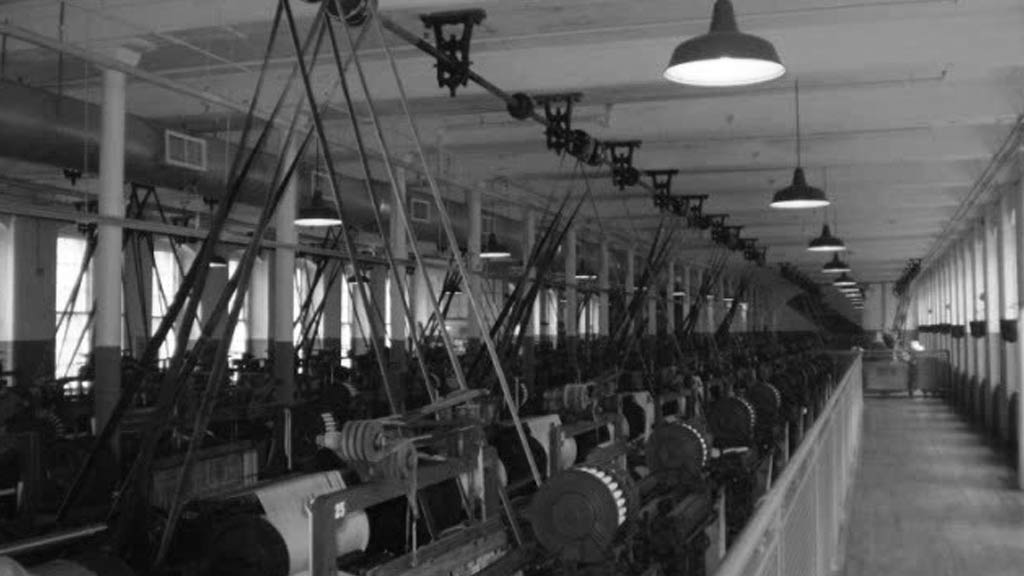
Lowell pioneered an integrated manufacturing system, consolidating all stages of textile production under one roof.
This vertical integration, from spinning to weaving and finishing, streamlined production processes and increased efficiency, leading to higher output and lower costs.
Powerful Waterway Utilization
Situated along the Merrimack River, Lowell maximized the use of waterpower to drive its textile mills.
The city’s extensive network of canals and hydropower systems provided a reliable and renewable energy source, enabling continuous operation of the mills and fueling industrial growth.
Labor System
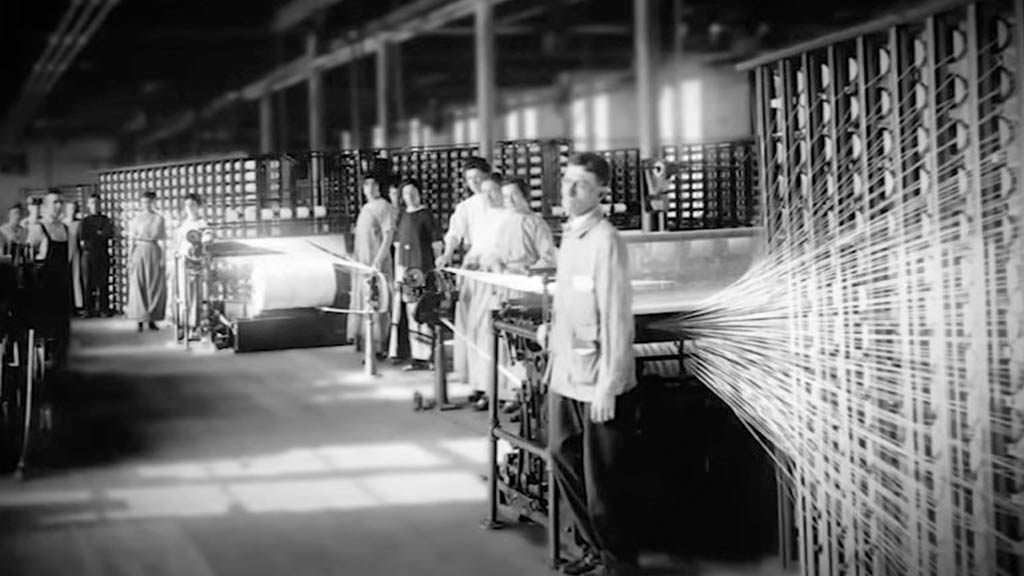
Lowell implemented a unique labor system, employing young women from rural areas as factory workers.
Known as the “Lowell System,” this model provided employment opportunities for women while exerting control over their working conditions and behaviours within factory communities.
Planned Industrial City
Lowell was meticulously planned as a model industrial city, with grid-like street patterns, spacious mill complexes, and designated residential, commercial, and recreational areas.
This planned approach to urban development ensured efficient use of space and resources, fostering a conducive environment for industrial growth and worker living conditions.
Cultural and Social Impact
The Lowell model had significant cultural and social implications. It attracted a diverse workforce of immigrants and rural migrants, shaping the city’s demographic makeup and fostering a unique blend of cultural traditions and identities.
Additionally, the model influenced labor movements and the development of early industrial capitalism in the United States.
Lowell’s unique model in the American Industrial Revolution epitomizes innovation, efficiency, and urban planning, leaving a lasting legacy that continues to influence industrial practices and urban development patterns to this day.
Social Impact of Lowell, Massachusetts
The social impact of Lowell, Massachusetts, during the Industrial Revolution was profound, shaping the lives of workers, immigrants, and communities. Here are several key points elaborating on the social impact of Lowell:
Labor Force Diversity
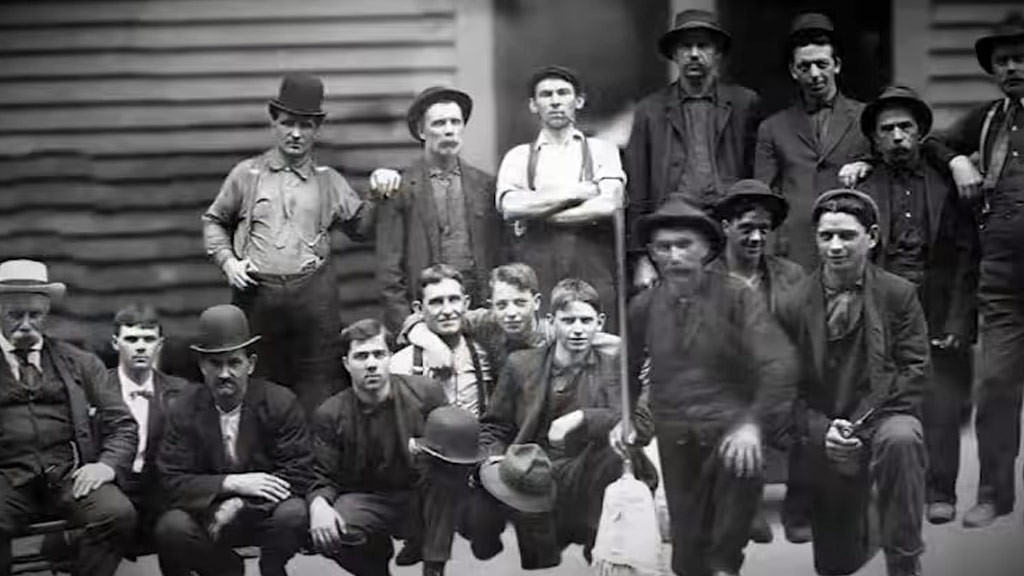
Lowell attracted a diverse workforce, including young women from rural areas, immigrants from Europe, and migrants from other parts of the United States.
This diverse labor force contributed to the city’s cultural tapestry and fostered a sense of community among residents from various backgrounds.
Factory System and Gender Dynamics
The Lowell mills implemented a unique factory system that employed young women as factory workers.
Known as the “Lowell System,” this model provided employment opportunities for women outside of domestic work but also imposed strict regulations and surveillance, influencing gender dynamics and social norms of the time.
Living and Working Conditions
Workers in the Lowell mills faced challenging living and working conditions. They lived in boardinghouses provided by the mills, working long hours under strict supervision.
Despite these hardships, many workers found a sense of camaraderie and solidarity within the tightly-knit mill communities.
Labor Activism and Reform
The social conditions in Lowell spurred labor activism and reform efforts. Workers organized strikes, protests, and labor unions to demand better wages, working conditions, and labor rights.
These efforts played a pivotal role in shaping labor laws and improving conditions for workers in Lowell and across the United States.
Cultural Exchange and Community Building
Despite the challenges, the diverse communities in Lowell engaged in cultural exchange, sharing languages, traditions, and customs.
Cultural institutions, social clubs, and religious organizations provided spaces for community building and mutual support, fostering residents’ sense of belonging and resilience.
Legacy and Remembrance
The social impact of Lowell’s industrial era is remembered and commemorated through historical landmarks, museums, and cultural initiatives.
These efforts honor the contributions and struggles of past generations, preserving the city’s rich heritage for future generations and highlighting its significance in American history.
The social impact of Lowell, Massachusetts, during the Industrial Revolution, underscores the complex interplay between industrialization, immigration, labor, and community dynamics, shaping the city’s identity and legacy for generations to come.
FAQs
What led to the founding of Lowell, Massachusetts?
Lowell was founded as a planned manufacturing center in the early 19th century, driven by the vision of Francis Cabot Lowell and his associates to harness waterpower for textile production, revolutionizing the industry and urban development in America.
What was the “Lowell System” in the textile mills?
The “Lowell System” was a labor model employed in the textile mills of Lowell, Massachusetts.
It involved recruiting young women from rural areas to work in the mills, providing them with employment opportunities outside of traditional domestic work but also exerting control over their working conditions and behaviors.
How did Lowell’s industrialization impact its social fabric?
Lowell’s industrialization had profound social impacts, shaping the lives of workers, immigrants, and communities.
It led to the formation of diverse mill communities, influenced gender dynamics through women’s employment in factories, spurred labor activism and reform, and fostered cultural exchange and community building among residents.
What role did immigrants play in Lowell’s history?
Immigrants played a significant role in Lowell’s history, contributing to its cultural diversity, labor force, and industrial growth.
Irish, French-Canadian, Greek, and Eastern European immigrants were among the many groups attracted to Lowell’s textile mills, shaping the city’s identity and social fabric.
Wrapping Up
The history of Lowell, Massachusetts, is a testament to the transformative power of industrialization, immigration, and social change.
From its founding as a planned manufacturing center to its emergence as a bustling textile hub during the Industrial Revolution, Lowell’s story reflects its residents’ resilience, ingenuity, and diversity.
The city’s legacy encompasses its contributions to textile manufacturing and urban development and its role in shaping labor rights, gender dynamics, and cultural exchange in America.
As we reflect on Lowell’s history, we recognize the enduring impact of its industrial era on the fabric of American society and the importance of preserving its heritage for future generations.
Jaclyn Lowe